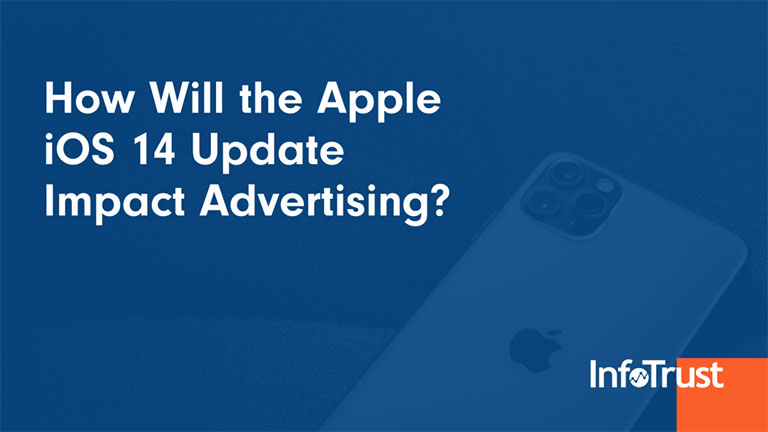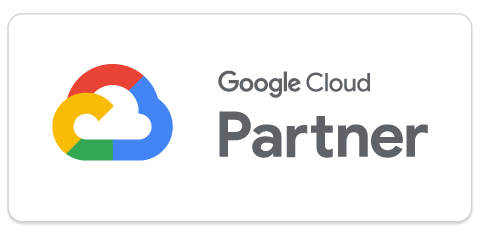[Editor’s note: This article was originally published on February 11, 2021 and updated on April 26, 2021 to reflect changes introduced by iOS 14.5.]
iOS 14.5 Update
On Monday, Apple announced iOS 14.5. Among the changes in this software update is a new privacy pop-up that allows users to restrict the use of their device ID.
According to Apple: “App Tracking Transparency requires apps to get the user’s permission before tracking their data across apps or websites owned by other companies for advertising, or sharing their data with data brokers. Apps can prompt users for permission, and in Settings, users will be able to see which apps have requested permission to track so they can make changes to their choice at any time.”
In practice, this means that an app like Facebook will prompt a user to allow consent so a user’s activity can be tracked across apps and websites owned by other companies the user visits. As a result, this will deliver personalized ads to the user.
Additionally, Google Ads has released how they are supporting advertisers with the new iOS14 updates.
Introduction
In June 2020, Apple announced that their iOS 14 update would include a very important new privacy update. Naturally, this update puts many businesses—or, more specifically, marketers within those businesses—on edge.
The iOS 14 update will require all applications to acquire explicit approval from users before the company can see the device ID, or “IDFA.” Let’s take a look at what this means and how it will impact advertisers.
Table of Contents
What is an IDFA (Device ID)?
The Identifier for Advertisers (IDFA) is a unique identifier for a mobile device. This unique identifier is used to target users for advertising purposes; it allows brands to personalize the ad content for a user, and then measure the effectiveness of their advertising at a user level across mobile devices.
It’s important to note that this ID is not going away. Instead, the ID will simply not be available to applications until a user opts in to allow tracking. Currently, the IDFA is available to all applications until a user chose to opt out.
For businesses this means, you’ll need to gain a user’s trust and encourage them to opt in.
Why is Apple Making Changes?
Privacy laws are the new normal. The General Data Protection Regulation (GDPR) became enforceable in 2018, California voters approved the California Consumer Privacy Act (CCPA) in 2019, and many countries and states are following their lead. Apple is taking a similar approach with their app store. In fact, Apple recently stated that “applications on the App Store are held to a high standard for privacy, security and content because nothing is more important than maintaining users’ trust.”
When Will the Update Go Live?
Apple originally indicated the changes would go live in the spring of 2021. Although the official release date is undetermined, advertisers should begin preparing for the change.
How Will the Update Impact Advertisers?
Apple has not released any information around the potential impact this update will have for advertisers. Facebook has been conducting tests to understand the potential impact and is predicting to see at least a 50 percent drop in audience network publisher revenue. Facebook is also providing advertisers with guidance on how to get ahead of the iOS14 rollout as well as possible limitations that will occur after the rollout. Companies such as Google, SnapChat, Pinterest, and many more have not yet released guidelines or recommendations for advertisers.
What are the Potential Changes Businesses Should Expect?
Today, many details around the changes are still up in the air. Simply put, until the update rolls out, we won’t know the full effects. In this article, we address only the confirmed changes iOS 14 will bring, and how those changes could impact your business going forward. The points below are not an exhaustive list of all impacts.
Audience Lists
As users choose not to opt in to the IDFA tracking for your application, the total number of users included in your audiences will likely decrease. For example, let’s say within your app that you are targeting all users who add product X to their cart, but do not checkout. Today, as long as a user has not opted out of IDFA tracking in your application, all users would be included in this audience. After the iOS14 launch, only the users who opt in to IDFA tracking for your application will be included in this audience. It’s difficult to say how signifiant the decrease in audience size will be.
In addition, lookalike audiences (also referred to as “similar audiences”) are less likely to be targeted. Lookalike audiences are built off the audiences lists you have in the advertising platform, as well as other signals from the advertising platform. As a result of less users opting in to IDFA tracking for your application, the lookalike audiences will not have as much data to use for building these audiences. To be clear, lookalike audiences will not disappear with iOS 14; however, they probably will not be as targeted in the future because the data provided to build them will not be as specific.
Ad Retargeting
Retargeting users who have not opted in to your app (based on device-level targeting) will not be possible after the iOS 14 update. For some advertising platforms—like Google and Facebook—this might not be a major issue since businesses can use data like email or phone number to target users. However, not all advertising platforms offer the ability to target users based on these data points.
User Breakdowns
Facebook has removed user breakdowns for app and web conversions from their reporting features. This includes information around age, gender, region, and placement. Other advertising platforms have not yet commented on if they will also remove this type of information from their reporting.
Attribution Window
Facebook has said it will be changing the attribution window. With this new rollout, Facebook will remove the option for 28-day click windows. This update will force advertisers to look at 1-day or 7-day click windows when optimize bidding. Other platforms have not yet commented on their plan for attribution windows.
Attribution Reporting
Attribution reporting based on conversions is likely to become less accurate. Mobile Measurement Partners (MMPs) traditionally rely on the IDFA identifier to tie impressions to conversions. However, Apple has announced a new API (SKAdNetwork) that will allow conversion data to be tracked back to a campaign level—but we’ll likely still see a decrease overall.
Will the Update Impact Websites?
No. Apple’s iOS 14 IDFA change is targeted at mobile applications and should not impact website tracking.
Impact on Analytics Platforms
Google has recently launched the latest version of their analytics tool: Google Analytics 4. In this new analytics environment, websites and apps can live within the same property. After the launch of the iOS 14 IDFA update, users who do not opt in to the mobile app tracking will not be available for retargeting purposes. For businesses, this means you will not be able to build a retargeting audience for users on iOS devices unless the user has opted in to IDFA tracking. In addition, the IDFA update could cause some user-level reports to become less accurate for iOS apps. Google’s Firebase has also cautioned companies not to rely on demographic information for A/B testing. Firebase and Google have also indicated that attribution and conversion measurement from advertising will be impacted when iOS 14 rolls out.
Adobe Analytics also offers the ability to have websites and apps in one reporting suite. Organizations who have structured their reporting like this will likely see similar issues to those mentioned above.
Impact on Users
Advertising will not go away. Individuals who choose not to opt in to an app’s IDFA tracking will still be exposed to advertising. However, the ads shown will not be as personalized and could be irrelevant to that user.
How to Adapt to These Changes
Businesses should start adjusting to this change today. Although there is not an official deadline, the change is fast-approaching. Here are a few tips to help businesses start adapting to this update.
Review Your First-Party Data
Start by reviewing what data is being collected about your users. Applications that offer a newsletter, account registration, checkout, subscriptions, etc. are already collecting some information. First-party data is the way forward, and it’s important to understand what data you are collecting, why you are collecting that data, and what data you need to collect.
Strive for Consumer Loyalty
Review your app goal (or goals) and the milestones along the way to that goal. Once these are well-defined, work to optimize the steps and encourage users to provide some information to you. This step is all about driving customer loyalty. Customers are more likely to provide you with their information when they trust your business.
Don’t Break Customers Trust
Once customers have given you information, guard that information. Put protections in place to minimize the risk that information could be exposed, lost, or stolen. Be sure you are following your own website and app privacy policy. Above all, keep your promises with your customers.
Update to the SKAdNetwork
Advertising platforms are encouraging businesses to update to the latest version of their SDK. Updating will ensure your business is prepared for the new Apple SKAdNetwork API when it launches.
Start Testing Today
Organizations that are concerned about iOS updates can perform tests that exclude iOS device types on select campaigns or audiences. Tests like this can show the potential impact from the iOS 14 update.
Businesses can run advertising campaigns or audience targeting using signals that are beyond the device level. Conducting a test using signals beyond the device level information will allow advertisers to prepare for the future.
A Challenge, or an Opportunity?
The iOS 14 update can seem scary or like the end of the world for personalized advertising. It doesn’t have to be. Organizations will be able to adapt to this change. Those that get started today will be one step ahead of the competition.



